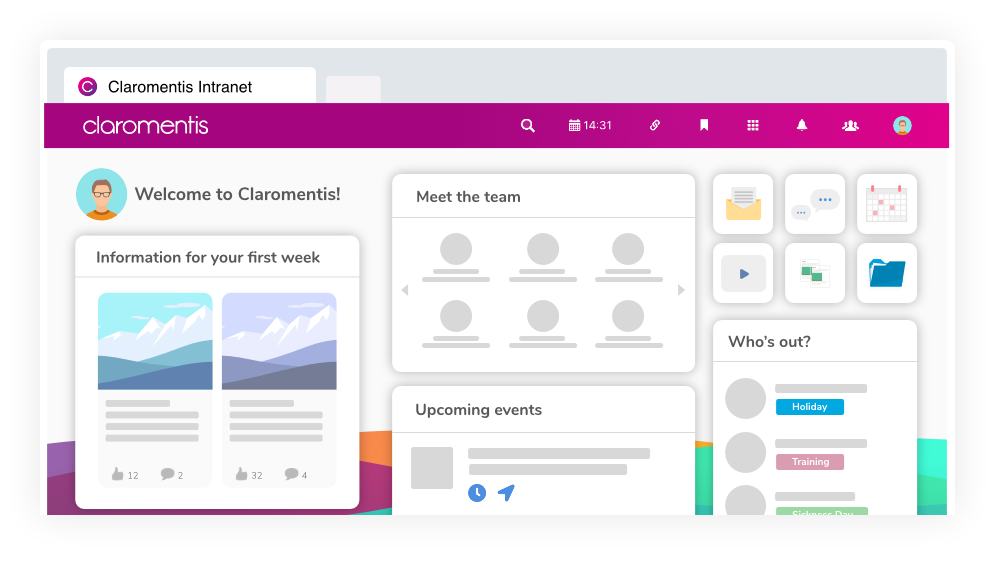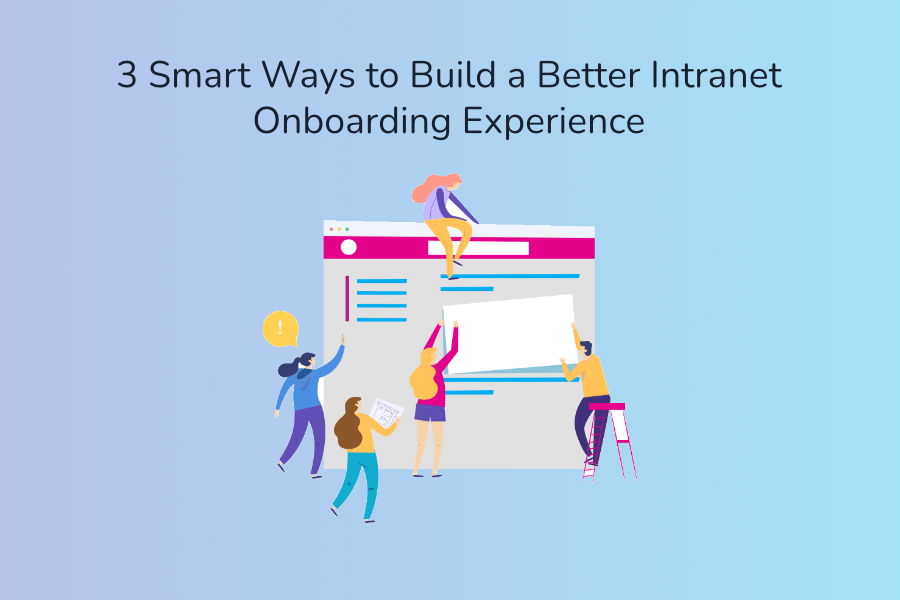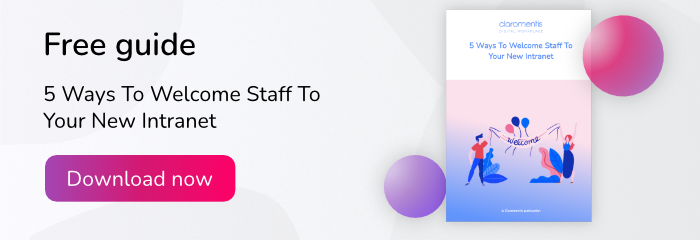When you think about the onboarding experience, you usually associate this with new team members who have made the decision to join your company. They’re typically taken through an employee onboarding programme that involves completing paperwork, meeting the team, and getting to grips with their day-to-day job role. It’s all part and parcel of the employee experience.
But did you know the onboarding process applies when introducing new intranet software into your business as well?
Why is the intranet onboarding experience important?
Onboarding your employees onto a new software system – especially one that they will use on a daily basis, such as an intranet – is imperative for several reasons:
- It will reduce resistance to change. Some employees can be wary of new software, and may avoid using it altogether if they haven’t had any training or support.
- A good onboarding experience will improve intranet adoption rates, by raising awareness of your new intranet software
- It will boost employee engagement with your intranet platform in the long term.
In a nutshell, company intranet onboarding is an important initial step for getting the system bedded into your organisation and incorporated into your employees’ day-to-day activities. Without it, staff won’t know how to use the system, the business process involved, nor understand what it’s for.
Indeed, without a proper introduction to your intranet platform, you’re simply putting a new system in front of your staff and expecting them to embrace it with little to no context. Imagine approaching your employee onboarding in the same way – it wouldn’t make a good first impression, and your new intranet solution would suffer the same fate.
With that in mind, here are 3 ideas for building an intranet onboarding experience that will engage staff, ease any worries, and improve intranet adoption across your different business units.
Communicate changes early
Whether you’re moving from one intranet to another or introducing a brand new system into your digital workplace, the sooner you communicate these changes to your staff, the better for continuous improvement.
By being transparent and forthcoming in your internal communications, this prevents any spread of misinformation, which could ultimately lead to unrest and resistance to change from your employees.
Be comprehensive in your communications too – don’t just send one email and think “job done”. Staff may miss the email, skim read and forget about it, or not read it at all. Communicating change is a two-way conversation, and it’s simply not enough to deliver a message then close the door.
Instead, organise a presentation to announce your new company intranet software, followed by an interactive Q&A so that staff can raise questions or concerns. Record the meeting and share it to those who couldn’t make it, ensuring that no one is left in the dark.

Record your intranet presentation so that teams can catch up if they can’t attend
Record your intranet presentation so that teams can catch up if they can’t attend
Vitally, follow-up on any employee questions in a timely manner. Nothing will break trust quicker than ignoring your employees’ feedback, so ensure that your leadership team is addressing issues promptly.
Remember: modern intranets, in their simplest form, are designed to encourage employees within the entire organisation to collaborate, share files, and improve employee engagement with other departments. So it wouldn’t hurt to remind teams of these benefits on a regular basis too.
Utilise an intranet pilot team for better onboarding
A great way to propel your intranet onboarding experience forward is to enlist the help of a pilot team.
This is a group of cross-departmental staff who are enthusiastic and passionate about your new intranet software, and they can be instrumental in helping boost intranet adoption rates across the entire company.
For example, your pilot team can raise awareness of your new system by sharing engaging intranet content, hosting interactive training sessions, or creating video tutorials that demonstrate how to use certain company intranet tools.

Ask your pilot team to post engaging content on your intranet
By being vocal about the benefits of your company intranet, your pilot team acts as endorsers and influencers. They can help build momentum by promoting the benefits via internal networking channels and help get others on board.
Build a successful intranet by creating engaging FAQs
Anticipate common questions and queries by creating an engaging FAQs page that’s accessible from your intranet homepage.
This will provide teams with one central place for locating the information they need to use the system, such as how the intranet is structured, ‘how to’ guides, company values, and video tutorials. Staff will feel more in control when they’re able to resolve issues themselves, rather than having to email tech support for help or else give up altogether.
Utilise your intranet’s content management tools to add colour and style to your FAQs page too. Not only will this make your FAQs page more engaging and less like a big wall of text, but it also allows you to align your internal and external branding.
For instance, you can use your external corporate website design as inspiration for building a good intranet platform, so that you can match colour schemes, images, and fonts. Doing so will create a consistent user experience between your external and internal brand, helping staff feel more connected and engaged with your intranet technology.

![[FREE GUIDE] 5 Ways To Welcome Staff To Your New Intranet](https://no-cache.hubspot.com/cta/default/5025095/b9c62652-19f8-4e5b-a569-1ec4b328d833.png)




